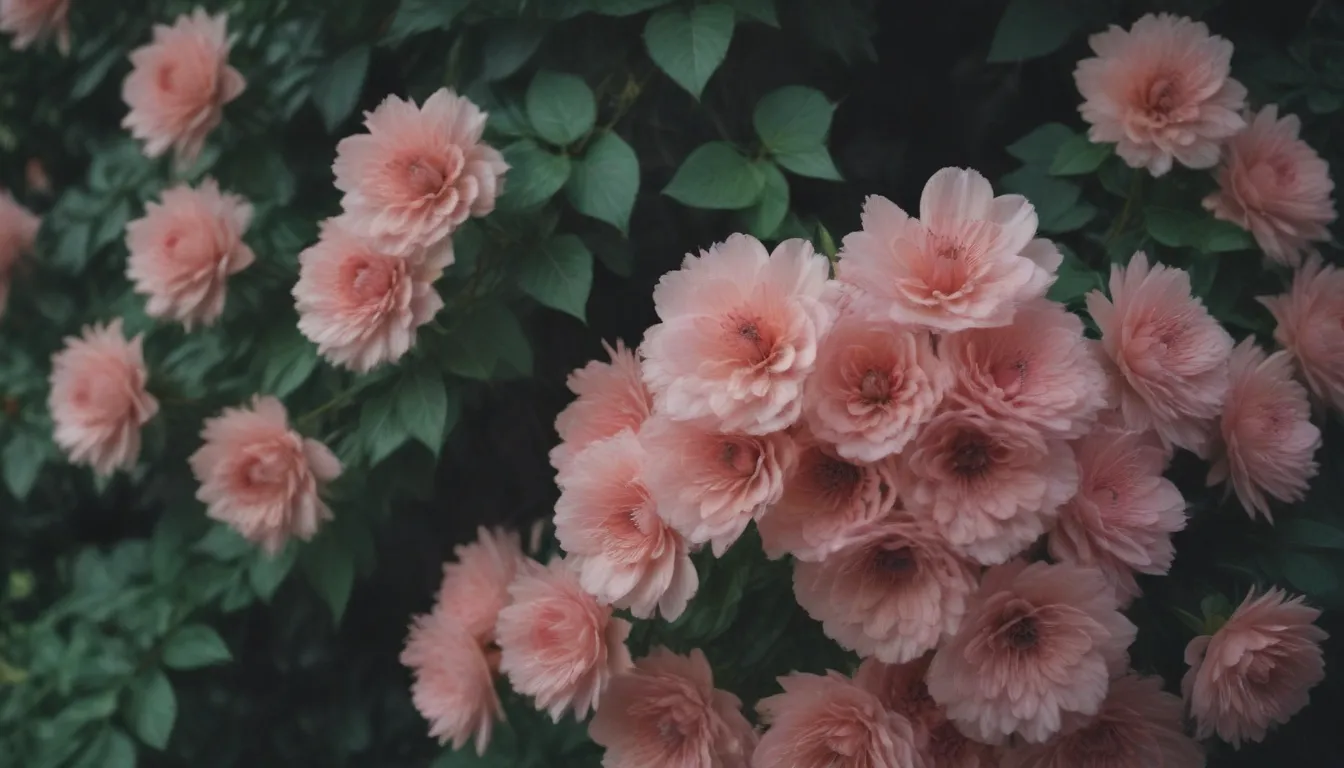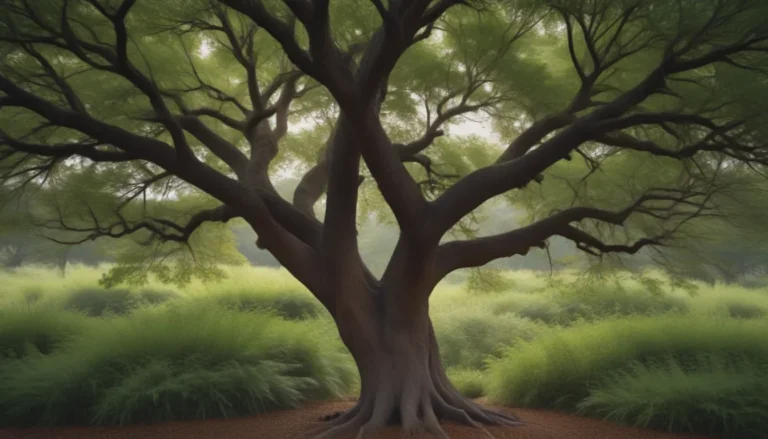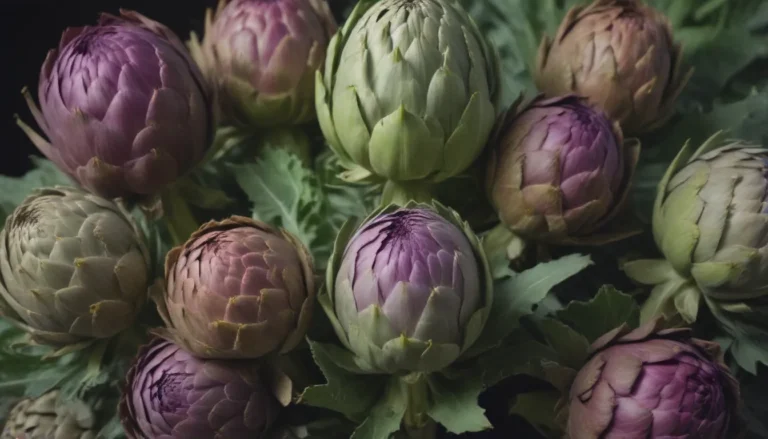The Ultimate Guide to Shade-Loving Flowers: 19 Beautiful Blooms for Your Garden

Are you looking to add some color and beauty to your shady garden? While many flowers thrive in the sun, there are plenty of shade-loving flowers that can brighten up even the darkest corners of your yard. These plants are perfect for those spots that don’t get full sun, and they come in a wide variety of colors and sizes. From delicate blooms to vibrant foliage, there’s a shade-loving flower for every garden. In this comprehensive guide, we’ll explore 19 of the best flowers for shade, along with tips on how to care for them and help them thrive in your garden.
Coral Bells
Coral bells are a stunning shade-loving flower that blooms from spring to early summer. These semi-evergreen plants come in a variety of colors, both in their flowers and foliage. From traditional green leaves to purple and gold varieties, coral bells are sure to add a pop of color to your garden. While they can tolerate full sun, they prefer partial shade to prevent foliage burn.
- Name: Coral Bells
- USDA Growing Zones: Varies
- Foliage Color Varieties: Green, Purple, Gold
- Sun Exposure: Partial Shade
- Soil Needs: Moist, Well-Drained
Hydrangea
Hydrangeas are a favorite among gardeners for their variety of flower colors and appearances. These plants do well in partial shade under tall deciduous trees, making them a great choice for shady gardens. Be sure to provide them with some extra water on hot days to keep them blooming their best.
- Name: Hydrangea
- USDA Growing Zones: Varies
- Color Varieties: Varies
- Sun Exposure: Partial Shade
- Soil Needs: Moist, Well-Drained
Astilbe
The key to growing thriving astilbe is water. These plants need moist, well-drained soil to flourish, so be sure to water them regularly if rain doesn’t do the job. Astilbe plants produce plume-like flowers in the spring and summer, making them a beautiful addition to any shady garden.
- Name: Astilbe
- USDA Growing Zones: Varies
- Color Varieties: Varies
- Sun Exposure: Partial Shade
- Soil Needs: Moist, Well-Drained
Impatiens
Impatiens are popular annual shade-loving flowers that come in a multitude of colors. These plants can thrive in heavy shade, but be sure to give them extra water if they’re in a sunny spot. Too much light can cause them to wilt, so provide them with the shade they need to thrive.
- Name: Impatiens
- USDA Growing Zones: Varies
- Color Varieties: Varies
- Sun Exposure: Partial Shade to Full Shade
- Soil Needs: Moist, Well-Drained
Bleeding Heart
Bleeding heart blooms in the spring with arching stems of heart-shaped flowers. While they can tolerate some sun in cooler climates, too much heat and sunlight can interfere with their flowering. Plant them in a shaded spot protected from strong winds for the best results.
- Name: Bleeding Heart
- USDA Growing Zones: Varies
- Color Varieties: Varies
- Sun Exposure: Partial Shade
- Soil Needs: Moist, Well-Drained
Rhododendron
Rhododendrons are flowering shrubs that thrive in shady spots. These plants bloom in the spring to early summer and prefer a cool, shaded environment. Plant them under trees or in a spot that doesn’t receive direct sunlight to keep them happy and healthy.
- Name: Rhododendron
- USDA Growing Zones: Varies
- Color Varieties: Varies
- Sun Exposure: Partial Shade
- Soil Needs: Moist, Well-Drained
Lungwort
Lungwort, also known as pulmonaria, is a steady spreader that blooms early in the spring. These plants prefer partial to full shade but can tolerate more sunlight in cooler weather. Be sure to provide them with the right amount of light to prevent foliage burn and promote healthy flowering.
- Name: Lungwort
- USDA Growing Zones: Varies
- Color Varieties: Varies
- Sun Exposure: Partial to Full Shade
- Soil Needs: Moist, Well-Drained
Fuchsia
Fuchsias are prized for their bright, teardrop-shaped blooms on trailing stems. These plants need light to bloom their best but dislike harsh afternoon sun. Provide them with morning sun and afternoon shade for the best results, and be sure to keep the soil moist but not soggy.
- Name: Fuchsia
- USDA Growing Zones: Varies
- Color Varieties: Varies
- Sun Exposure: Morning Sun, Afternoon Shade
- Soil Needs: Moist, Well-Drained
Siberian Bugloss
Siberian bugloss is a low-maintenance plant that thrives in shady conditions. Its tiny blue flowers bloom in the spring, resembling forget-me-nots. These plants prefer a shady spot and may need more frequent watering if grown in sunnier conditions.
- Name: Siberian Bugloss
- USDA Growing Zones: Varies
- Color Varieties: Varies
- Sun Exposure: Shade
- Soil Needs: Moist, Well-Drained
Lily of the Valley
Lily of the valley is a hardy ground cover with fragrant white flowers that bloom in the spring. These plants are shade-loving flowers that can tolerate some direct morning sun but should be protected from strong afternoon sunlight.
- Name: Lily of the Valley
- USDA Growing Zones: Varies
- Color Varieties: White
- Sun Exposure: Partial Shade to Full Shade
- Soil Needs: Moist, Well-Drained
Wishbone Flower
Wishbone flowers are annuals that bloom in the early summer and stretch until fall. These plants don’t need much sun to thrive and prefer a shady spot, especially in hot climates. Be sure to provide them with the right amount of light to keep them blooming all season.
- Name: Wishbone Flower
- USDA Growing Zones: Varies
- Color Varieties: Varies
- Sun Exposure: Morning Sun, Afternoon Shade
- Soil Needs: Moist, Well-Drained
Lamb’s Ear
Lamb’s ear is a low-growing ground cover plant with silvery green foliage. These plants thrive in poor soil and have good drought tolerance. Plant them in partial shade, especially in hot climates, to prevent scorching of the attractive foliage.
- Name: Lamb’s Ear
- USDA Growing Zones: Varies
- Color Varieties: N/A
- Sun Exposure: Partial Shade
- Soil Needs: Well-Drained
Foxglove
Foxgloves have a tall growth habit and bloom in the early summer with clusters of tubular flowers. While they can handle full sun in cool climates, they prefer partial shade in warmer regions. Be sure not to overwater these plants, as they are susceptible to rot.
- Name: Foxglove
- USDA Growing Zones: Varies
- Color Varieties: Varies
- Sun Exposure: Partial Shade to Full Sun
- Soil Needs: Well-Drained
Forget-Me-Not
Forget-me-nots are delicate flowers with bright blue blooms. These plants prefer some shade, especially in warmer climates, to protect them from strong afternoon sun. Be sure to deadhead the spent blooms to control their spread in your garden.
- Name: Forget-Me-Not
- USDA Growing Zones: Varies
- Color Varieties: Blue
- Sun Exposure: Partial Shade to Full Sun
- Soil Needs: Moist, Well-Drained
Dogtooth Violet
The dogtooth violet produces delicate flowers in the spring and thrives in shaded woodland settings. These plants need protection from harsh sunlight and heat, making them a perfect choice for shady gardens. Mulch around the plant to retain moisture and keep the roots cool.
- Name: Dogtooth Violet
- USDA Growing Zones: Varies
- Color Varieties: Varies
- Sun Exposure: Shade
- Soil Needs: Moist, Well-Drained
Hellebore
Hellebores are shade-loving flowers that bloom in the winter or early spring with rose-like flowers. These plants thrive in partial to full shade and can tolerate more sunlight in the spring when the weather is cool. Be sure to provide them with shade once the temperature rises for the best results.
- Name: Hellebore
- USDA Growing Zones: Varies
- Color Varieties: Varies
- Sun Exposure: Partial to Full Shade
- Soil Needs: Moist, Well-Drained
Primrose
Primula is a large genus of shade-loving flowers with a variety of species. These plants feature dark green leaves and colorful flowers that rise above the foliage on stalks. Some species prefer partial shade with morning sun, while others do best in full shade.
- Name: Primrose
- USDA Growing Zones: Varies
- Color Varieties: Varies
- Sun Exposure: Varies
- Soil Needs: Moist, Well-Drained
Hosta
Hostas are known for their green and variegated foliage, making them a quintessential shade plant. These plants grow tall flower stalks with blooms in various shades and are a favorite food source for deer. Plant them in a shady spot to keep them happy and healthy.
- Name: Hosta
- USDA Growing Zones: Varies
- Color Varieties: Varies
- Sun Exposure: Partial to Full Shade
- Soil Needs: Moist, Well-Drained
Woodland Phlox
Woodland phlox is a low-growing groundcover with beautiful flowers that attract butterflies. These plants thrive in shady conditions and make for a stunning addition to any garden. Plant them in moist, well-drained soil for the best results.
- Name: Woodland Phlox
- USDA Growing Zones: Varies
- Color Varieties: Varies
- Sun Exposure: Partial to Full Shade
- Soil Needs: Moist, Well-Drained
By incorporating these shade-loving flowers into your garden, you can add beauty and color to even the darkest corners. Whether you’re looking for delicate blooms or vibrant foliage, there’s a shade-loving flower for every garden. With the right care and attention, these plants will thrive in your shady garden and provide you with endless enjoyment throughout the season.




